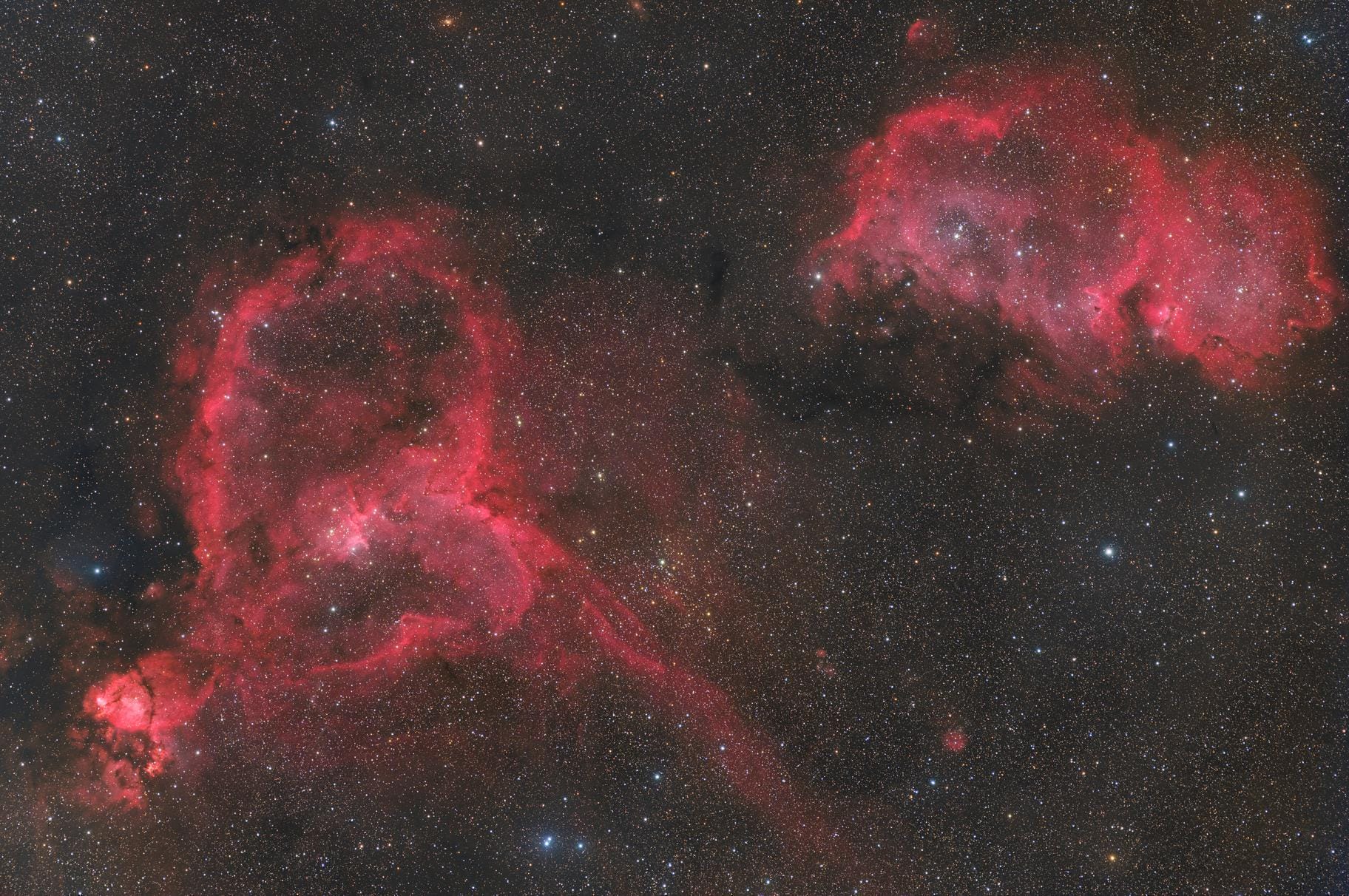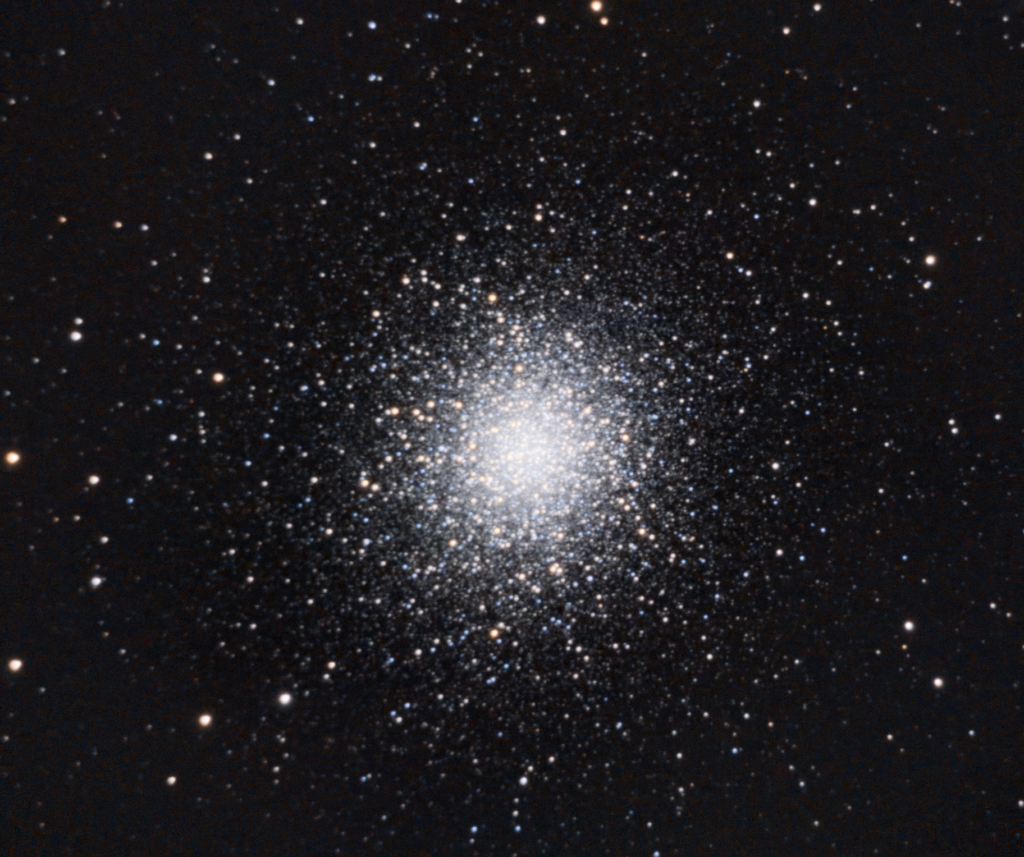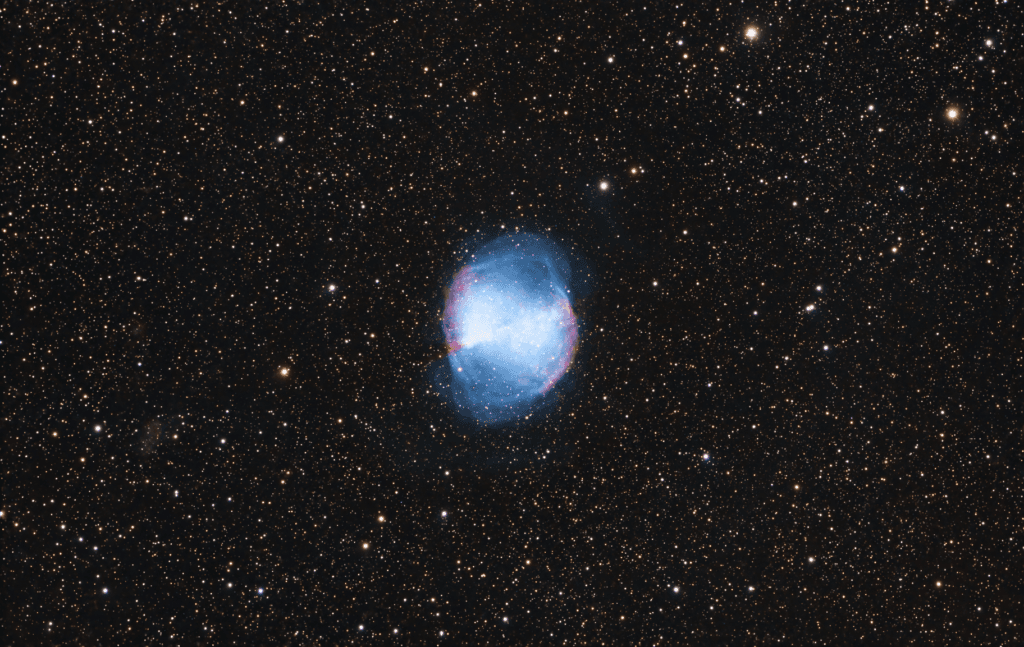
Alright, fellow cosmic romantics and deep-sky enthusiasts, prepare yourselves for a celestial duo that truly captures the essence of the universe: the Heart and Soul Nebulae!
These two magnificent emission nebulae are nestled together in the constellation Cassiopeia, and they’re so close and interconnected, you could almost say… well, you know that classic ’80s hit by Modern Talking? “You’re My Heart, You’re My Soul!” Yep, these two nebulae definitely embody that sentiment, dancing together in the cosmic ballroom!
The Heart Nebula (IC 1805): A Cosmic Valentine
First up, we have the Heart Nebula, officially known as IC 1805. And yes, it absolutely lives up to its name! This massive emission nebula is shaped remarkably like a human heart, often depicted with a glowing knot of stars forming its “atrium.” It’s composed of vast clouds of ionized hydrogen gas, which glow a brilliant red due to the intense ultraviolet radiation from the young, hot stars embedded within its core.
At the very heart of the Heart Nebula lies the open star cluster Melotte 15. These brilliant, massive stars are the powerhouse illuminating the entire nebula, carving out cavities and sculpting the surrounding gas and dust with their fierce stellar winds. It’s a true stellar nursery, constantly churning out new suns within its fiery embrace.
The Soul Nebula (IC 1848 or Westerhout 5): The Cosmic Companion
Right next to the Heart, connected by tendrils of glowing gas, is the Soul Nebula, also known as IC 1848 or Westerhout 5. While perhaps not as overtly “shaped” as its heart-shaped partner, the Soul Nebula is just as breathtaking. It’s another vast region of star formation, filled with its own clusters of hot, massive young stars that are busy ionizing the surrounding hydrogen gas, making it glow vividly.
The Soul Nebula features numerous dark dust lanes, which are colder, denser regions where new stars are still collapsing out of the gas. These dark areas provide a dramatic contrast to the bright, glowing gas, adding incredible depth and texture to the image.
A Pair Made in Heaven (Literally!)
Together, the Heart and Soul Nebulae form a truly immense complex of star formation, stretching hundreds of light-years across space. They are located approximately 7,500 light-years from Earth, making them a fantastic target for wide-field astrophotography. Capturing them requires a good grasp of hydrogen-alpha wavelengths to bring out their stunning red glow, and perhaps some oxygen III data to highlight any blue regions.
Photographing these two nebulae is incredibly rewarding. You get to witness not just one, but two colossal stellar factories side-by-side, each a testament to the universe’s ongoing process of creation. And who knows, maybe while you’re processing your images, you’ll find yourself humming a certain ’80s tune. My new setup is absolutely buzzing to get these two cosmic lovers in its sights – stay tuned for some truly heartfelt (and soulful!) captures!


